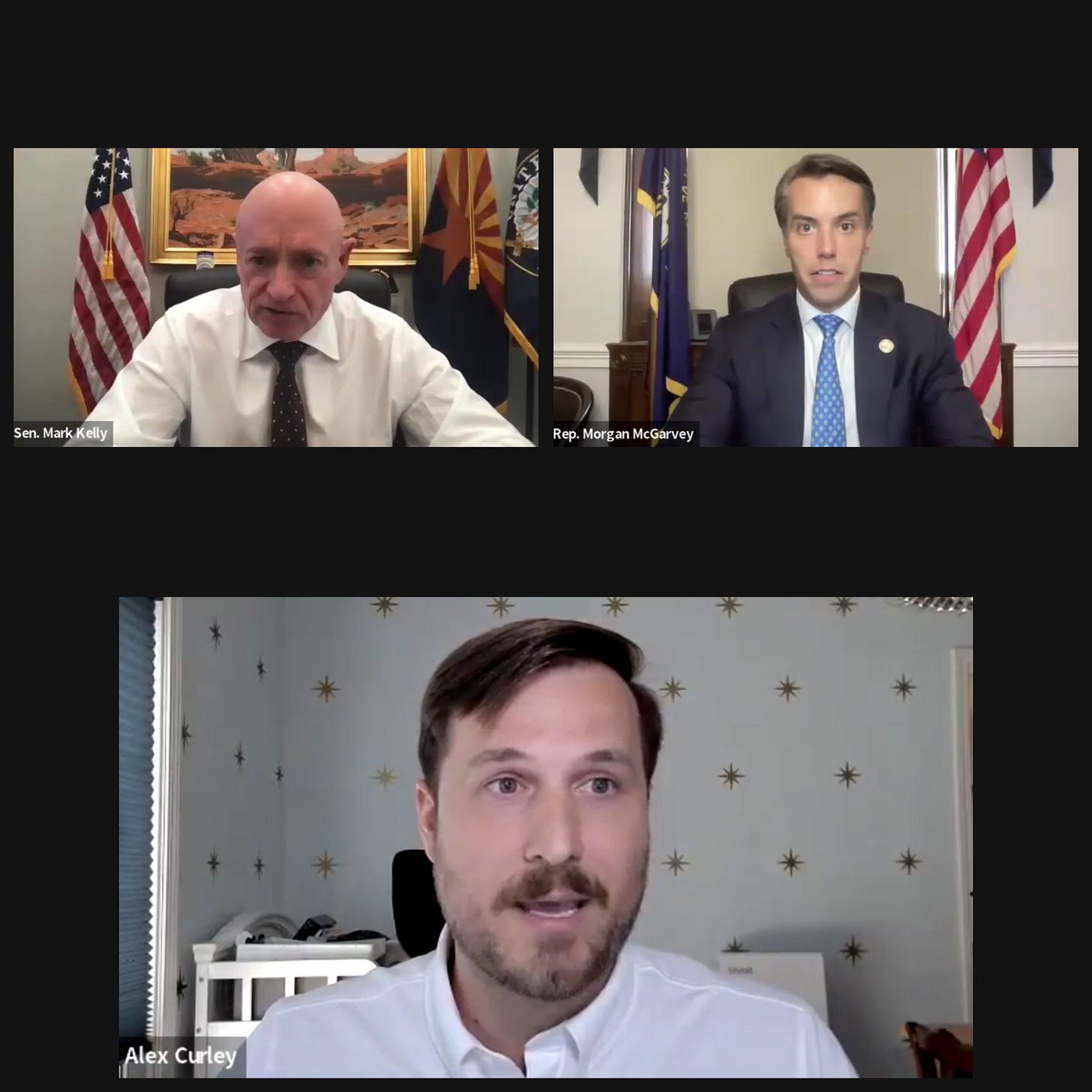My Helene Story, One Year Later
In July, I was asked to talk about why preserving public media's federal funding was important with Sen. Kelly and Rep. McGarvey. Here's what I told them.
One year ago tomorrow, Hurricane Helene devastated the Southern U.S., especially the Appalachians. As a resident of Asheville, N.C., I and my family watched as the generational storm tore apart our friends’ and family’s homes, businesses we cared about, even an entire town built alongside the Broad River. With no internet or cell phone service, we relied exclusively on Blue Ridge Public Radio to learn what was happening in the rest of the community.
Ten months later, I was asked to speak about the importance of public media’s federal funding on a panel with Arizona Senator Mark Kelly and Kentucky Representative Morgan McGarvey. Here’s what I told them:
I wanted to start with a personal story: I live in Asheville, North Carolina, and in September of last year, me, my wife, and our one year old son lived through Hurricane Helene. We were okay thankfully, but it was an incredibly devastating storm.
We lost power, we lost water, we lost internet - but most importantly, the storm knocked out all of the cell phone towers in the Asheville area. For a time, we had no way of contacting the outside world. The only way anyone could get real information was by turning on a radio and listening to our local public radio station.
I don’t know if you’ve ever experienced this kind of isolation before, but it’s incredibly disorienting. And when we talk about the rescissions package, which would force many public media stations to close, that’s the kind of isolation we’d be subjecting to rural communities - especially those whose only source of local journalism is public media.
I’ve spent a lot of time thinking about and analyzing station finances. I specifically wanted to answer the question of how many stations would close if they lost federal funding. The answer is between 15 and 18%.
15 to 18%1 of local stations means an audience of tens of millions2. And these are not audiences in crowded metropolitan markets like DC or LA, these re people who live in the northernmost reaches of Alaska, in reservations in New Mexico, the mountains of West Virginia.
And the states that will be affected most by these cuts aren’t Democratic strongholds. Alaska and West Virginia both stand to lose at least half of every public media station in those states. Texas stands to lose about a third.
There’s a reason why every advanced economy in the world subsidizes journalism. That’s because those countries don’t want anyone left behind. This rescissions package, with the devastating cuts to public media, would do just that: We’d be leaving tens of millions of people behind, without access to local journalism, without access to emergency alerting. In short, passing this rescissions package would mean leaving them without a lifeline - and that lifeline is public media.
Thank you.
This was based on preliminary work for a later Semipublic article, in which I calculated up to 15% of stations were at risk of closing.
Tens of millions of potential audience members, as in these stations reach a population of tens of millions.
Semipublic will return next week with more analysis. If you enjoyed this post, please consider supporting me with a paid subscription, or by buying me a coffee.



